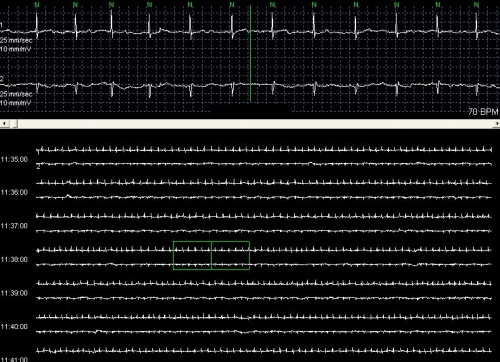Holter monitoring
Holter monitoring

Holter monitoring is continuous monitoring and recording of two or more surface electrocardiographic leads in a magnetic tape or solid state memory. Recordings on magnetic audio cassettes are now obsolete and most of the recorders have solid state flash memory so that the device size has also come done remarkably. The devices can record 24 to 72 hours of data from the electrocardiographic leads usually attached on the subjects chest with disposable silver – silver chloride electrodes. After completion of recording, the recording device is removed and the data downloaded into the Holter analyzer, usually a personal computer with appropriate hard ware card and software installed. After analysis, the data can be reviewed and various arrhythmia detection templates checked for any errors in automatic analysis and corrections applied if needed. Continuous recordings with timing can be displayed in a full disclosure format and representative tracing clicked to enlarge for better analysis as shown in the image above. Patient triggered and automatically detected events can be checked and compared with the patient diary for correlating with symptoms. Holter is useful in documenting arrhythmias which occur daily, if it is not frequent enough to be captured by a single ECG. But less frequent occurrence of arrhythmia may need longer term event monitors like external loop recorders or implantable loop recorder to document. While Holter records the given leads of ECG continuously, loop recorders record only the captured events, which can be done either manually using a programming wand or automatically by preset heart rate criteria.
